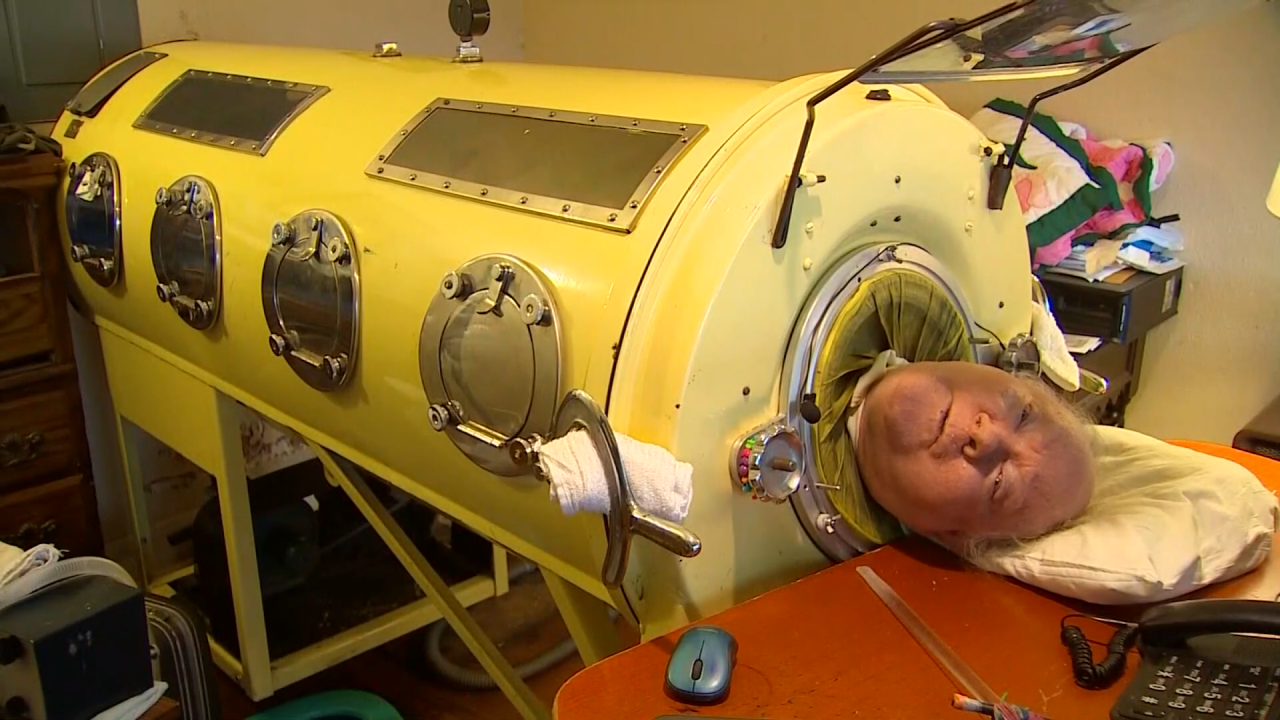One day in July, in a quiet Dallas suburb, a six-year-old boy named Paul Alexander was playing outside in the summer rain. He didn’t feel well – his neck hurt, his head pounded. Leaving his muddy shoes in the yard, he walked barefoot into the kitchen, letting the screen door slam behind him. When his mother looked up at his feverish face, she gasped. She made him run out and grab his shoes, then ordered him to bed.
Paul spent the first day in his parents’ bed, filling in Roy Rogers colouring books. But even as his fever soared and aching pains blossomed in his limbs, the family doctor advised his parents not to take him to hospital. It was clear that he had polio, but there were just too many patients there, the doctor said. Paul had a better chance of recovering at home.
Over the next few days, the boy’s condition worsened. Five days after he had walked into the kitchen barefoot, Paul could no longer hold a crayon, speak, swallow or cough. His parents rushed him to Parkland hospital. Though the staff were well trained and there was a dedicated polio ward, the hospital was overwhelmed. There were sick children everywhere, and nowhere to treat them all. Paul’s mother held him in her arms and waited.
Paul recovered from the initial infection, but polio left him almost completely paralysed from the neck down. What his diaphragm could no longer do for him, the iron lung did. Paul lay flat on his back, his head resting on a pillow and his body encased in the metal cylinder from the neck down. Air was sucked out of the cylinder by a set of leather bellows powered by a motor; the negative pressure created by the vacuum forced his lungs to expand. When the air was pumped back in, the change in pressure gently deflated his lungs. This was the regular hiss and sigh that kept Paul alive. He could not leave the lung. When medical staff opened it to wash him or manage his bodily functions, he had to hold his breath.
That led his parents to make the brave decision to take him and his iron lung home, to live out his days in peace. But instead of dying, Paul went from strength to strength, once he was home in his parents’ care.
The iron lung uses a negative pressure system. Powered by a motor, its bellows suck air out of the cylinder, creating a vacuum around the patient’s body and forcing the lungs to expand and take in air. When the air is let back in, the same process in reverse makes the lungs deflate. The device needs a source of energy to function.
During power cuts, the bellows had to be pumped by hand; neighbours would come to help with the job. Paul’s father designed an alarm bell that Paul could ring using his mouth if he needed urgent attention.
Over time Paul learnt to consciously breathe by gulping down air, using his throat muscles to force air into his lungs. He called it frog-breathing.
His younger brother, Philip, explained that the promise of a puppy gave Paul the incentive to be brave, and attempt to spend time out of his iron lung to learn the complicated glossopharyngeal breathing technique, the medical term for frog-breathing.
As his confidence and strength grew, he was able to spend increasingly longer periods out of the iron lung. This allowed him to begin to experience a bit more of life. He was allowed to venture into the neighbourhood in his wheelchair with childhood friends, returning to the iron lung when he was tired.
He couldn’t move to feel what was trapping him, and when he tried to call for help, he discovered he couldn’t make a sound.
Paul had survived a serious bout of polio, but had been left quadriplegic. After an emergency tracheostomy operation, he was unable to breathe without the iron lung machine that now encased his small body.
When he died recently at the age of 78, Paul had spent more than seven decades using his iron lung, longer than anyone else in history.
World record
Last year Paul was recognised by Guinness World Records as the person who had lived the longest in an iron lung.
Philip’s admiration for his brother runs deep: “I saw him go through a lot of struggles in his life. I’m going to miss him. I called him when I needed to talk to someone about any kind of problem I had.”
He says that while the rest of the world might be amazed by how long his brother survived in his iron lung, his parents would not have been: “They believed in him. They gave him so much strength and love. They wouldn’t have been shocked.”

